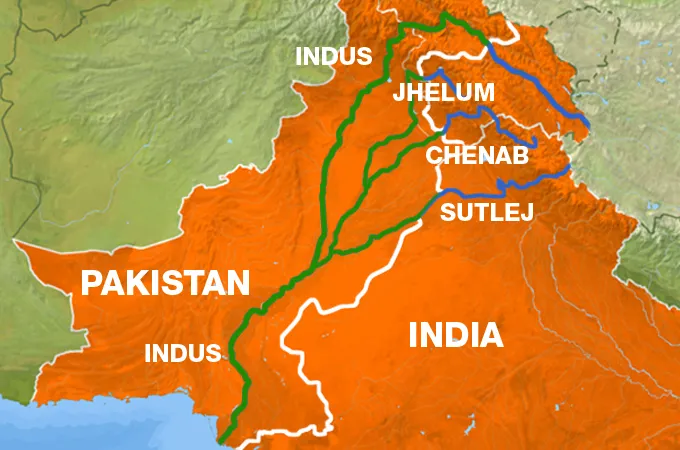Understanding the Indus Water Treaty: History, Importance and Impacts

The Government of India has been in action mode since the terrorist incident took place on 22 April in Pahalgam, Jammu and Kashmir. And we all must have heard of the Indus River Agreement. It may be that many of you may already know, and some people may not know. But after all, what is this Indus Water Treaty, and what will affect Pakistan by stopping it? Let us know in detail.
What is Indus Water Treaty
The Indus Water Treaty is a treaty between India and Pakistan for the distribution of water from the rivers. The treaty was signed by Prime Minister of India Jawaharlal Nehru and Pakistan President Ayub Khan on 19 September 1960 in Karachi. The treaty took place in the presence of the World Bank.
Under this agreement, the water of the Indus River and its tributaries (Jhelum, Chenab, Ravi, Beas and Sutlej) was divided in both countries India and Pakistan. Under this treaty, India gets 19.5 per cent water from the Indus and its tributaries, while Pakistan gets 80 per cent water. India also uses about 90 per cent of its share of water. According to this agreement, the control of three "eastern" rivers - Beas, Ravi and Sutlej - was given to India, and three "western" rivers - Indus, Chenab and Jhelum - to Pakistan.
The Indus Commission (Indus Commission) was formed to implement this treaty. Every year, a meeting of this commission is also held. Due to this treaty, India gives its neighbour Pakistan 80.52% of the total water ie 167.2 billion cubic meters of water annually.
This treaty allows both countries to use certain use on the rivers allotted to others. India and Pakistan can use this water for domestic purposes like hydro-power and irrigation.
Rivers under Indus Water Treaty
Vyas River is in Himachal Pradesh, India. You will be surprised to know that this river does not flow in Pakistan, but its water is found in the Sutlej River, which flows in parts of Pakistan. The Ravi River originates from the Baralacha La Pass located in the western part of the Himalayas in the Himachal Pradesh state, which flows to Pakistan. The origin of the Chenab River is also in Himachal Pradesh. It originates from Baralacha Pass in Himachal which goes to Pakistan.
The Jhelum River originates from the Anantnag district of Jammu and Kashmir, which flows through Pakistan-Occupied Kashmir (POK) in the Punjab province of Pakistan. At the same time, the Sutlej River flows in the eastern part of the Punjab province of Pakistan. It meets the Chenab River and joins the Indus River.
Indus Water Treaty Highlights
The main points of the Indus Water Treaty (Sindhu Jal Samjhauta) are as follows:-
- This treaty continued even after the wars. The treaty was not violated even during the wars of 1965 and 1971.
- It is considered one of the most successful international water treaties in the world.
- It is one of the sensitive issues between the two countries.
- This agreement is important for the two countries politically and diplomatically.
- This agreement helps to maintain the natural stream and ecosystem of the Indus river system.
Impact on Pakistan
Pakistan is highly dependent on the Indus River system (about 90% of its agriculture depends on it).
If India blocks or diverts upstream water, major parts of Pakistan could face serious droughts, especially Punjab and Sindh, which are the main food-producing regions. Crops like wheat, rice, sugarcane, and cotton would be hit severely. Food shortages could occur, leading to higher food prices and food insecurity for millions.
Agriculture is a large part of Pakistan's GDP. A hit to farming means loss of jobs, lower exports, and economic downturn.
Keep following Informantra.com for useful and interesting content.
You may also like:
How to choose the best AC for your home or office?
If you also want to buy a great air condition for your home or office to get relief from the heat, then definit...
The story of IIT Village of Bihar
Over 40 students from Bihar's Patwa Toli have cleared JEE Main 2025, with many trained at a free coaching centre run ...
Top Career Options After 12th: Courses, Exams, Colleges, Fees & Salary Packages
Explore top career options with detailed information on entrance exams, admission process, top co...
